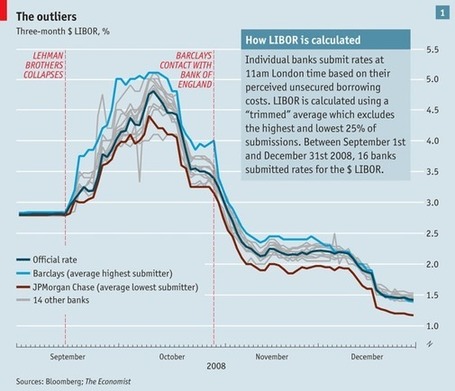THE ECONOMIST - Briefing
THE most memorable incidents in earth-changing events are sometimes the most banal. In the rapidly spreading scandal of LIBOR (the London inter-bank offered rate) it is the very everydayness with which bank traders set about manipulating the most important figure in finance. They joked, or offered small favours. “Coffees will be coming your way,” promised one trader in exchange for a fiddled number. “Dude. I owe you big time!… I’m opening a bottle of Bollinger,” wrote another. One trader posted diary notes to himself so that he wouldn’t forget to fiddle the numbers the next week. “Ask for High 6M Fix,” he entered in his calendar, as he might have put “Buy milk”.
What may still seem to many to be a parochial affair involving Barclays, a 300-year-old British bank, rigging an obscure number, is beginning to assume global significance. The number that the traders were toying with determines the prices that people and corporations around the world pay for loans or receive for their savings. It is used as a benchmark to set payments on about $800 trillion-worth of financial instruments, ranging from complex interest-rate derivatives to simple mortgages. The number determines the global flow of billions of dollars each year. Yet it turns out to have been flawed.
[More on link. Posted as an important, easy to follow backgrounder.]

